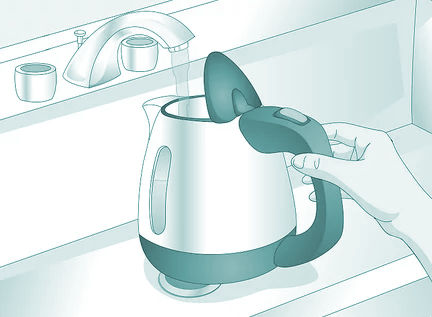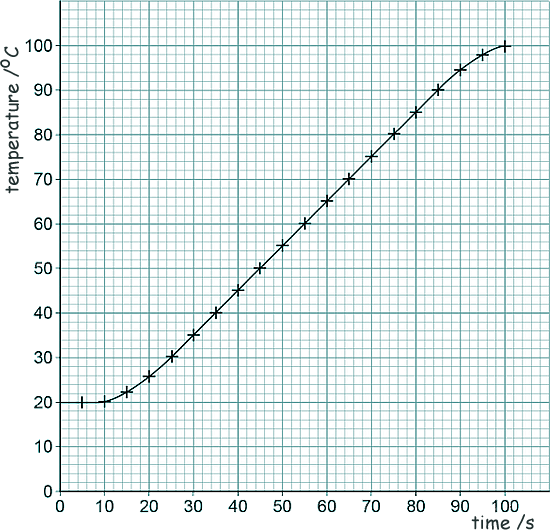Specific Heat Capacity and Latent Heat Questions - GCSE standard Q12. Lily heated water in an electric kettle.
Water has a high specific heat capacity. (a) Complete the sentence below by choosing answers from this box.
The specific heat capacity of a substance is the energy needed to raise the temperature of 1 _ _ of the substance by 1 _ _ . [2 marks] (b) The kettle circuit contains a thermistor which is used to switch the kettle off when the water reaches 100 °C. Draw the correct symbol for a thermistor. [1 mark] (c) Given that the resistance of the heating element in the kettle is 15 Ω and the current in the heating element is 12 A, calculate the power of the heating element. [3 marks] (d) Lily investigated how quickly the kettle could increase the temperature of 0.50 kg of water. Here is a graph of her results of the investigation:
The temperature of the water did not start to increase until 10 seconds after the kettle box was switched on. What is the reason for this? ( Tick one box).
[1 mark] (e) Describe a method Lily could have used to obtain the results shown in the graph. [6 marks] (f) The mass of water in the kettle was 500 g. The temperature of the water increased from 20 °C to 100 °C. Given that the specific heat capacity of water = 4200 J/kg °C , calculate the energy transferred to the water. [4 marks] (g) The water in the kettle boiled for a short time before the kettle switched off. During this time 5.0 g of water changed to steam. Given that the specific latent heat of vaporisation of water = 2,260,000 J/kg, calculate the energy transferred to change the water to steam. [4 marks] (20 marks total) |
Follow me...
|







